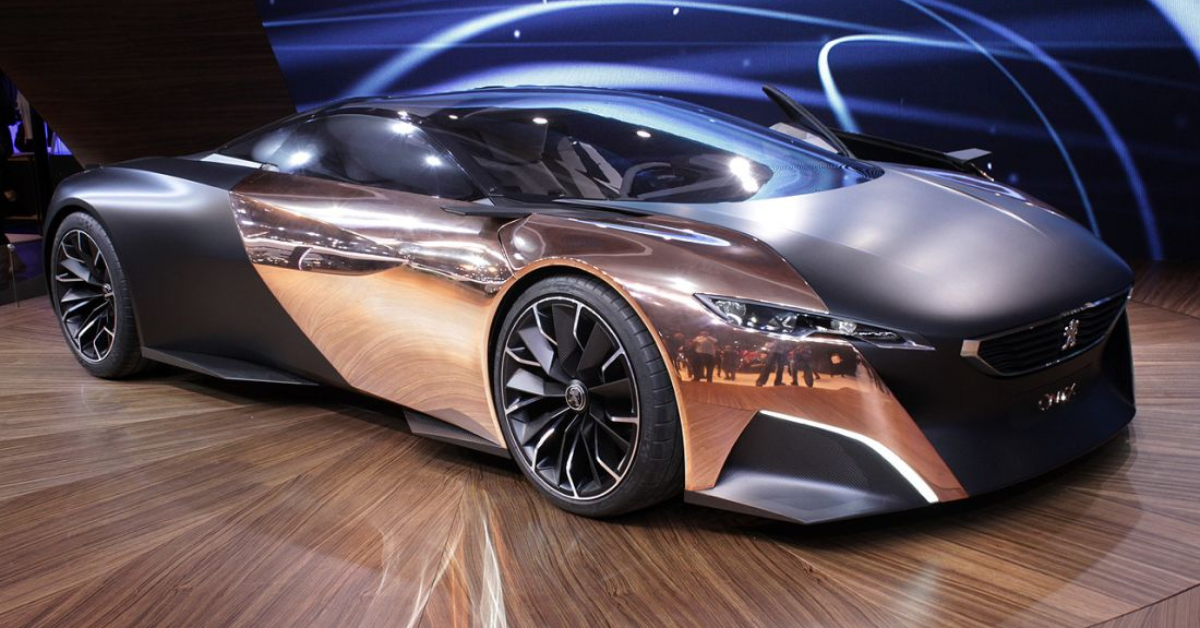Cars have revolutionized transportation and shaped the modern world in ways that few other inventions have. From their humble beginnings in the late 19th century to the high-tech, fuel-efficient models of today, cars continue to be an essential part of everyday life. Whether you’re an enthusiast, a commuter, or simply someone who appreciates the convenience they offer, cars play an important role in our daily routines, economies, and culture.
In this article, we’ll take a deep dive into the history of cars, the different types available today, and the technological innovations that are shaping the future of the automotive industry. We’ll also explore how cars have impacted society and the environment, and what the future might hold as electric vehicles and self-driving technology become more widespread.
1. The History of Cars: From the Steam Engine to the Electric Age
The history of cars is as rich as it is complex, filled with innovation, competition, and rapid technological advancement. The first significant step toward modern cars came in the 18th century with the invention of the steam-powered vehicle, but it wasn’t until the late 19th century that the internal combustion engine (ICE) powered the first true automobiles.
Early Developments (1800s-1900s)
- Karl Benz, often credited as the inventor of the modern car, built the first gasoline-powered vehicle in 1885, known as the Benz Patent-Motorwagen. It was a three-wheeled vehicle that marked the dawn of the automotive age.
- Henry Ford, the American industrialist, revolutionized car production with the introduction of the assembly line in 1913. His Model T became the first mass-produced car, making automobiles affordable to the average person and changing the landscape of personal transportation forever.
Post-War Boom (1940s-1970s)
The post-World War II era saw a massive boom in car ownership, particularly in the United States and Europe. Cars became a symbol of freedom and status. Muscle cars, such as the Ford Mustang and Chevrolet Camaro, dominated the roads in the 1960s, while luxury brands like Mercedes-Benz and BMW catered to more affluent buyers. This era also marked the rise of Japanese automakers like Toyota and Honda, known for their reliable and affordable cars.
2. The Types of Cars on the Market Today
The automobile industry is incredibly diverse, offering vehicles that cater to every possible need. From compact city cars to rugged SUVs and high-performance sports cars, there’s a vehicle for every lifestyle and budget.
Sedans
Sedans are the most common type of car, known for their balance of size, comfort, and affordability. They typically have four doors and a separate trunk. Some popular sedans include the Honda Accord, Toyota Camry, and BMW 3 Series.
SUVs (Sport Utility Vehicles)
SUVs have become increasingly popular due to their spacious interiors, high driving position, and off-road capabilities. Models like the Ford Explorer, Toyota RAV4, and Jeep Grand Cherokee are known for combining utility and comfort. There’s also a growing segment of crossover SUVs, which blend features of both cars and traditional SUVs.
Trucks
Pickup trucks are essential vehicles for industries like construction and agriculture but are also popular among everyday drivers, especially in North America. The Ford F-150, Chevrolet Silverado, and Ram 1500 are among the best-selling vehicles in this category, valued for their durability, towing capacity, and versatility.
Electric Vehicles (EVs)
With the rise of sustainability and environmental concerns, electric vehicles are gaining significant traction. Brands like Tesla, Nissan, and Chevrolet have become pioneers in this space, with models like the Tesla Model 3, Nissan Leaf, and Chevy Bolt offering consumers eco-friendly alternatives to traditional gasoline-powered cars.
3. The Impact of Cars on Society and the Environment
Cars have undoubtedly transformed society, offering unprecedented mobility and freedom. However, they’ve also come with significant costs, particularly to the environment and public health.
Economic Growth and Mobility
Cars have enabled people to travel long distances for work, leisure, and commerce, contributing to the development of suburbs and increasing economic opportunities. Industries related to cars, such as manufacturing, fuel, and repair services, have created millions of jobs globally.
Environmental Impact
Despite their benefits, traditional gasoline-powered cars are significant contributors to air pollution and global warming. The greenhouse gases emitted by cars, such as carbon dioxide (CO2), contribute to climate change, while pollutants like nitrogen oxides and particulate matter harm human health.
In response to these concerns, there’s been a growing push toward electric vehicles and hybrid technology, which aim to reduce the carbon footprint of personal transportation. Governments worldwide are implementing stricter emissions regulations and offering incentives for consumers to switch to cleaner vehicles.
4. Technological Innovations in the Automotive Industry
The automotive industry is currently undergoing one of its most significant transformations since its inception, with groundbreaking technologies reshaping the way we think about cars and driving.
Electric Vehicles (EVs)
Electric vehicles, led by companies like Tesla, are at the forefront of the shift towards more sustainable transportation. These vehicles run entirely on electric power, reducing the need for gasoline and significantly lowering emissions. With advancements in battery technology, EVs are becoming more affordable and have extended ranges, making them practical for everyday use.
Autonomous Vehicles (Self-Driving Cars)
Autonomous or self-driving cars are another key innovation in the automotive industry. Companies like Waymo, Uber, and Tesla are testing and developing self-driving technology that could revolutionize how we commute. These cars use sensors, cameras, and advanced software to navigate roads without human intervention, potentially reducing accidents caused by human error.
While fully autonomous cars aren’t yet widely available, we’re seeing partial automation features in many new vehicles, such as adaptive cruise control, lane-keeping assistance, and self-parking systems.
Connected Cars and IoT (Internet of Things)
Many modern cars are now “connected,” meaning they can communicate with other vehicles, infrastructure, and devices. This connectivity enhances safety and convenience, offering features like real-time traffic updates, emergency services alerts, and remote vehicle monitoring. The Internet of Things (IoT) is playing an increasingly important role in the automotive industry, with connected cars providing a more seamless and integrated driving experience.
5. The Future of Cars: What Lies Ahead?
The future of cars is undoubtedly exciting, with several trends shaping what vehicles and transportation will look like in the coming decades. automotive platforms are regularly highlighting how the future of cars will be shaped by electric mobility, autonomous driving, and smart technology.
Sustainability and Zero Emissions
Governments and manufacturers are pushing for zero-emission vehicles, and by 2040, many countries, including the UK and Canada, plan to ban the sale of new gasoline and diesel vehicles. As technology advances, we will likely see an increase in the number of electric and hydrogen-powered vehicles on the road, reducing pollution and combating climate change.
Car Sharing and Ride-Hailing Services
The rise of car-sharing services like Zipcar and ride-hailing apps like Uber and Lyft have already changed the way people think about owning cars. In the future, these services could become even more integrated with autonomous vehicles, creating networks of self-driving cars that people can summon on demand. This could reduce the need for individual car ownership and alleviate traffic congestion in urban areas.
Flying Cars and Futuristic Transportation
It may sound like science fiction, but companies like Uber Elevate and Terrafugia are working on flying cars. While it will likely take decades before they become common, advancements in vertical takeoff and landing (VTOL) technology could one day make flying cars a reality.
Conclusion
Cars have come a long way from their humble beginnings and continue to evolve with the changing needs of society. Whether through electrification, automation, or sustainable materials, the automotive industry is on the brink of a major transformation that will shape the future of transportation.
FAQs About Cars
1. What is the most fuel-efficient car on the market?
The most fuel-efficient car available depends on the type of vehicle, but electric cars like the Tesla Model 3 and hybrids like the Toyota Prius offer some of the best fuel efficiency in their categories.
2. How does an electric vehicle (EV) work?
Electric vehicles run on electricity stored in batteries rather than gasoline. They use electric motors to turn the wheels, and these motors are powered by batteries that can be recharged through a charging station.
3. Are electric vehicles more expensive to maintain than gasoline cars?
Electric vehicles generally have fewer moving parts than gasoline cars, making them cheaper to maintain. EVs do not require oil changes or other routine maintenance that gasoline cars do, but their batteries may need to be replaced after several years, which can be expensive.
4. What is autonomous driving?
Autonomous driving refers to cars that can drive themselves without human input. While fully autonomous cars are still in development, many vehicles today have features like adaptive cruise control and lane-keeping assistance that offer partial automation.
5. How can I reduce my car’s carbon footprint?
You can reduce your car’s carbon footprint by driving a fuel-efficient vehicle, maintaining proper tire pressure, using fuel-efficient driving habits, and considering the switch to an electric or hybrid vehicle.
Stay in touch to get more updates & alerts on Anonib! Thank you


